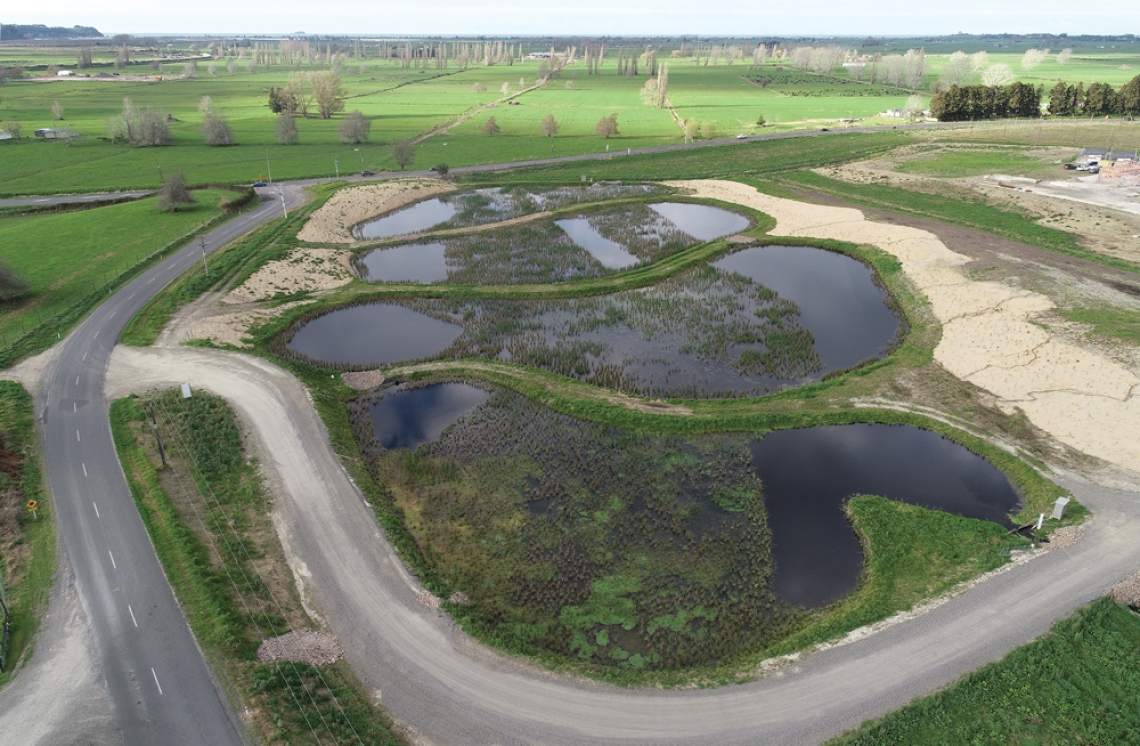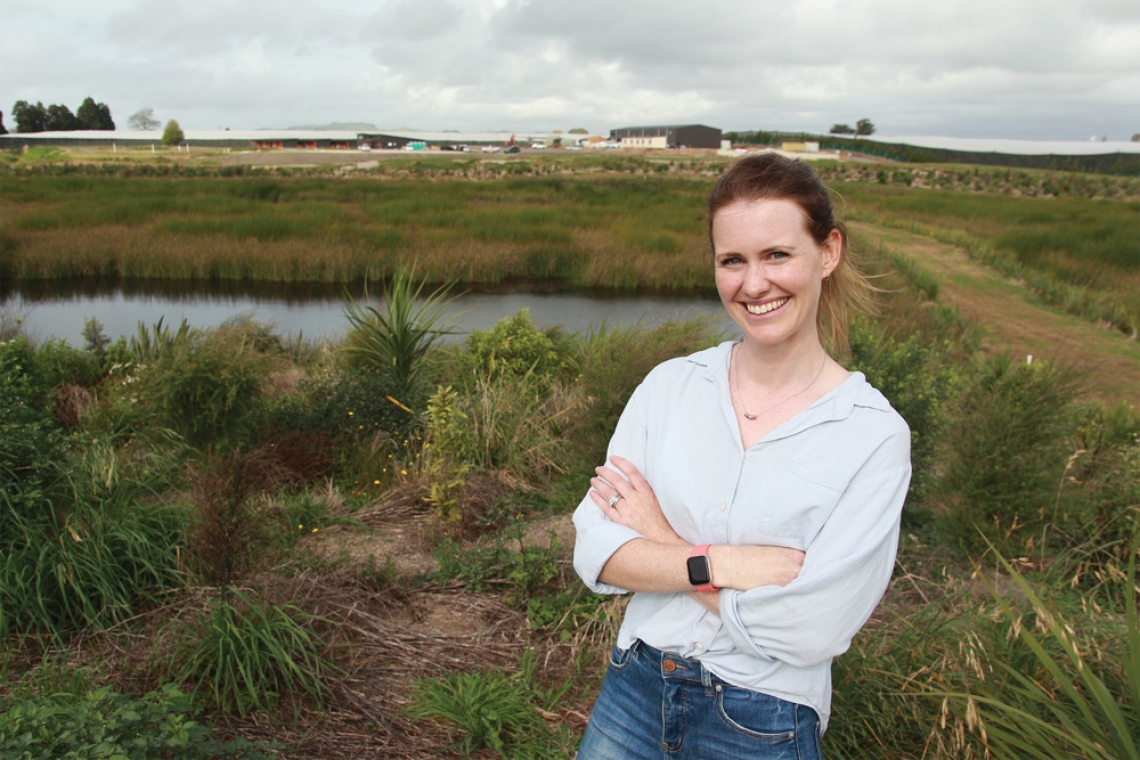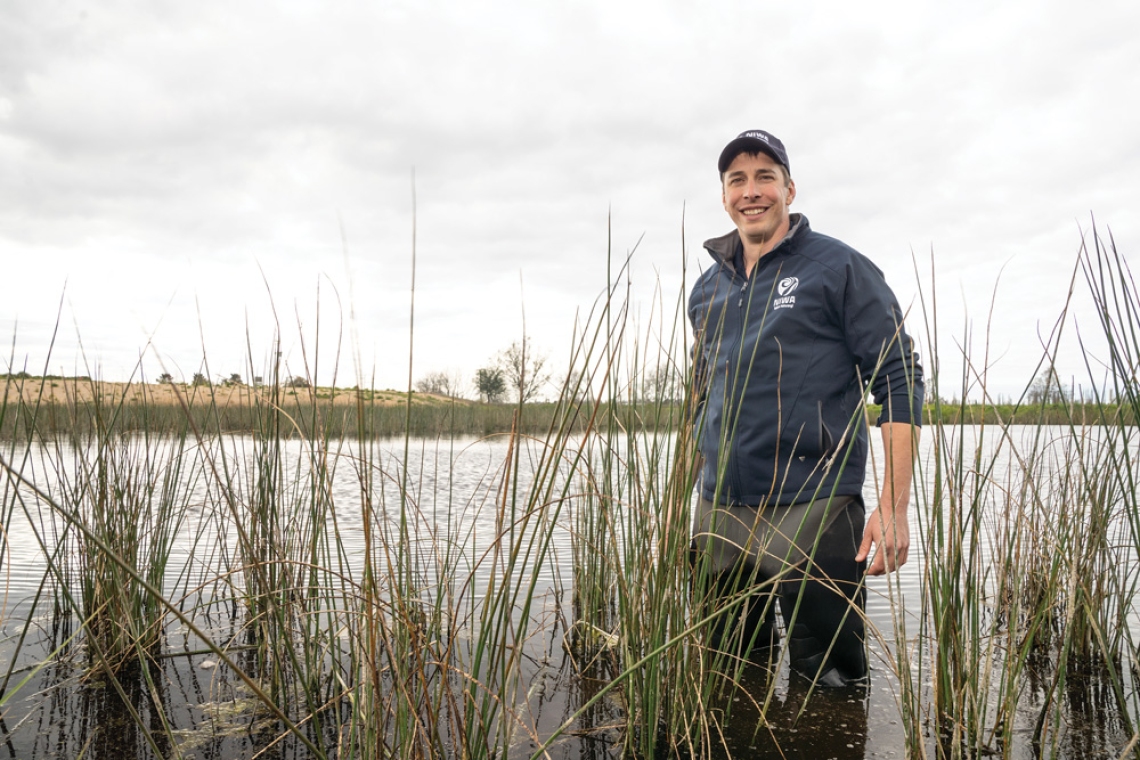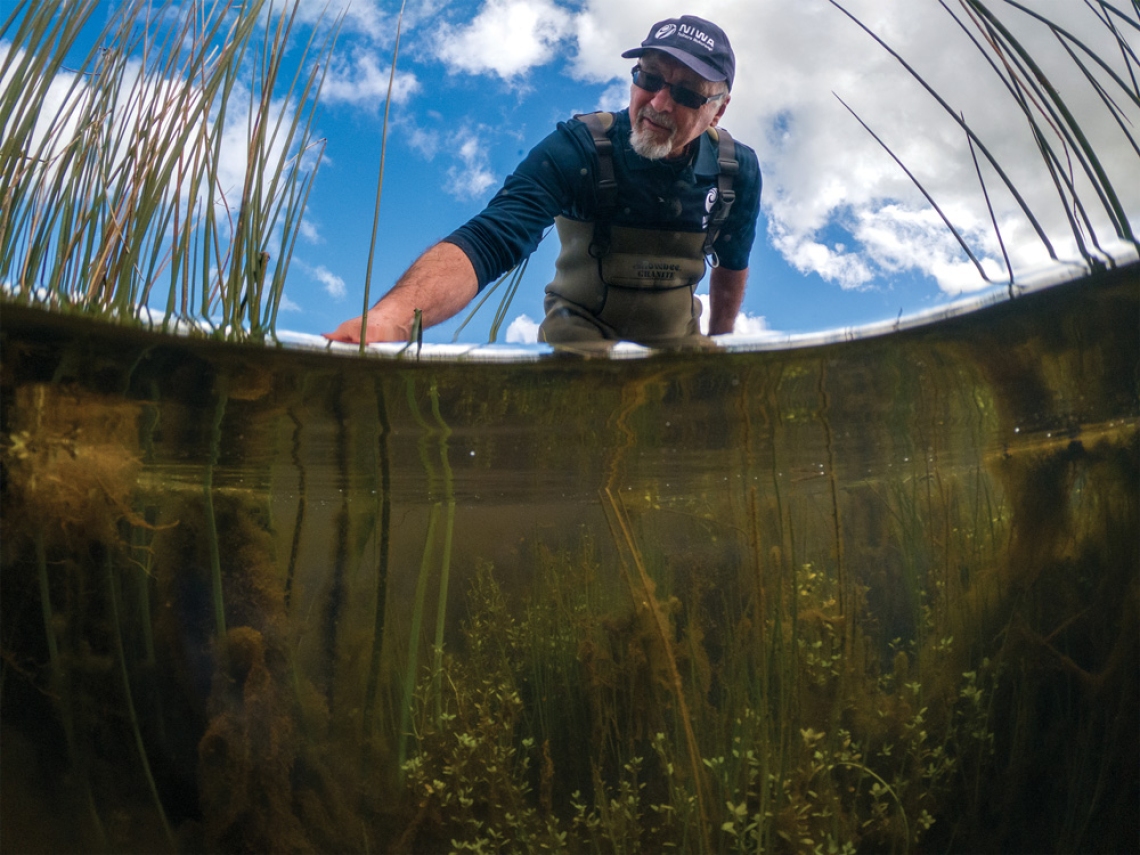This new 3-hectare wetland has been constructed from scratch on a former dairy property near Maketu.
A little over a year old, it’s already hard at work stopping sediment and contaminants entering local waterways. Lawrence Gullery reports on a research project that aims to build back better.
Olivia Manusauloa loves her drive in to work every day. When she turns off State Highway 2 into Baygold’s head office, she can see three years of hard work and planning starting to reach fruition. Manusauloa is the kiwifruit company’s relationship and sustainability manager and is the driving force behind an innovative project to construct a wetland at its Bay of Plenty headquarters.
“It’s quite unique for an orchard company to build its own wetland, but it is indicative of where the directors want Baygold to go.”
Manusauloa could see the potential when Baygold decided to centre its operations on a 32ha former dairy farm near Maketu in 2020.
“When we looked at the site it was clear that it was in a flood zone. Our consenting requirements stated we must have ponds for water storage, but we thought we might be able to do more than just ponds.”
Manusauloa worked with Bay of Plenty Regional Council on options for a custom-built wetland, sited on an old drain on the edge of the property.
“We had worked with the council on native planting projects in the past, but we asked if they would support a much larger project,” she says.
“That’s when we heard that there was an opportunity coming up with NIWA.”
Earlier that year, NIWA researchers launched a four-year, $1.95 million project, funded by the Ministry of Primary Industries, to examine the performance of constructed wetlands in mitigating rural run-off.
The project involves five councils: Tasman, Taranaki, Hawke’s Bay, Bay of Plenty and Canterbury.
NIWA worked alongside councils and landowners to identify sites and design the wetland systems, advising on plant selection, estimates of contaminant removal, and installing monitoring equipment.
The councils are co-funding and assisting with wetland monitoring, which will help improve understanding of the ability of constructed wetlands to reduce the flow of nutrients, suspended solids and faecal microbes into waterways.
In-kind support from landowners and organisations such as Fonterra, has helped fund wetland construction.
For the Baygold wetland, funding support was provided by Bay of Plenty Regional Council, the Ministry for the Environment and the Ministry for Primary Industries, One Billion Trees programme.
The regional council and Baygold developed a plan to set aside 3 ha for the wetland, and construction started in February 2022.
Local iwi Ngāti Pikiao, have supported the project, naming the wetland Te Rere I Maniatutu – “the flow from the Maniatutu”.
It is one of six wetlands constructed around the country as part of the research project. It is the only site built on an orchard – the others are on dairy or drystock farms or council reserve land.
Maniatutu wetland was designed as a series of four connected ponds; each pond has smaller sections of deeper water to allow sediment to settle, larger areas of shallow water for densely vegetated plants, and then open areas to allow the water to recirculate and redistribute across the wetland.
It has been planted with 41,000 natives, with margins and riparian surrounds a mixture of sedges, flaxes, shrubs and trees. As well as improving water quality, the goal is to boost biodiversity and enhance both wetland aesthetics and cultural values.
Maniatutu wetland helps to slow and filter water flowing into the nearby Little Waihi Estuary. It occupies 2.6% of a 73ha catchment, and it is estimated to remove an annual average of 40% of nitrogen load carried by the water that passes through the wetland.
While it is early days for Maniatutu, the results are on par with other similarly designed wetlands in the project (See box page 33).
In recent decades, the Little Waihi Estuary’s water quality has declined as increasing amounts of nutrients, sediment and faecal matter have washed in from surrounding land. Bay of Plenty Regional Council scientists estimate that the current quantity of nutrients and bacteria entering the estuary will need to be reduced by 30–66 percent to stop the decline.
NIWA wetland scientist Dr Brandon Goeller and his colleague, aquatic pollution specialist, Dr Chris Tanner, lead the nationwide project, supported by freshwater researchers around the country.
Goeller said the inlet and outlet of each constructed wetland is equipped with state-of-the-art flow, nitrate and turbidity sensors that enable real-time, continuous measurements.
They also feature automated samplers, which are triggered to take samples for analysis of nutrients, sediment and E. coli during heavy rain and runoff events.
Sample collection and maintenance of equipment is completed by regional council staff.
The monitoring systems enable analysis of the water both as it enters the wetland, and just before it exits, to determine any changes over time.
“We started the monitoring at Maniatutu in July 2022, and it’s been a very wet year with more flow through the wetland than anyone might have expected,” Goeller says.
“Surface drainage is the major inflow; groundwater makes up a very minor portion of what’s treated.”
Typical baseflows through the wetland average about 10 litres/second, while flows can peak up to 100–200 litres/second during large runoff events.
“Initial results from the baseflow water quality monitoring are very encouraging, particularly as it has only been established and planted for just over a year.”
The wetland is already showing reductions in nitrate-nitrogen, dissolved reactive phosphorus (DRP) and E. coli concentrations as the water passes through the series of interconnected ponds.
NIWA has a contract from MPI to manage the monitoring data from the wetland and quantify its performance up to June 2024, but Goeller hopes it will be extended so more data can be collected to gauge the longer-term performance.
The wetlands improve water quality, but also generate other benefits. Digging ponds and planting out large areas of aquatic to semi-aquatic habitat has provided a place for wildlife to flourish.
“Creating a constructed wetland has been like kick-starting the ecosystem,” says Goeller.
“It’s been amazing to see the change at each site in this project. Paddocks have been transformed into wetlands and each fits uniquely into their surrounding landscape."
“They provide stepping stones where freshwater flora and fauna can be re-established and connected throughout catchments.
“We’ve seen plenty of ducklings and pūkeko once the wetland plants mature, which usually only takes a year or two.
“There are also the invertebrates that provide an excellent food source for birds, frogs and fish. We’ve seen plenty of kōura (freshwater crayfish) and tuna (eels) in some of the ponds too.”
Interest in wetlands as mitigation systems is increasing as landowners face new responsibilities under the updated freshwater regulations.
In response, NIWA released its Constructed Wetlands Practitioner Guidelines last year. It is a joint initiative with DairyNZ, to help landowners through the process of designing, constructing and maintaining a wetland.
It also gives councils more confidence to recognise how constructed wetlands may help meet requirements to reduce contaminant losses.
Earlier this year, Baygold won the regional title at the Bay of Plenty Ballance Farm Environment Awards, held as an example of a business that has integrated environmental excellence while producing kiwifruit.
It has also won the Bayleys People in Primary Sector Award, Hill Laboratories Agri-Science Award and the Rabobank Agri-Business Management Award.
Manusauloa says the recognition is confirmation that a business can be economically viable and environmentally responsible, and she hopes it will be an encouragement for others.
“So far, we’ve helped two other property owners with advice on where to source plants and with funding applications."
Manusauloa says Baygold joined the project with a long-term view of the wetland’s potential.
“Yes, the wetland has an amenity value, but we also believe there will be opportunities in the future to harness the carbon sequestration potential of the native plants in and around it."
“We also know the wetland will continue to produce scientific data which will assist development of other projects."
“There is a lot of interest, people comment on how much they appreciate the investment in the area, others want advice on wetland development."
“It has involved three years of planning and hard work. But driving past the wetland every day, I just love it."
“Every time I see it, I feel we’ve accomplished something great.”
Wetland performance
- Baygold’s Maniatutu constructed wetland is one of six currently monitored as part of the MPI-funded project.
- Performance varies due to a number of factors, including size, surrounding soil profiles and climate.
- Case studies show that as wetlands increase in size from 1% to 5% of the contributing catchment, sediment removal rates ranging from 50% to 90% can be achieved.
- Similarly, in warmer areas of New Zealand, nitrate removal ranges up to 50%.
- Wetlands up to 5% of the catchment area can also remove up to 48% of total phosophorus.




